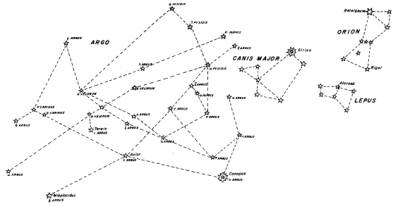by Frater Zephyros
Do what thou wilt shall be the whole of the Law.
When Tuthmosis IV died, his son, Pharaoh Amenhotep III, married his sister Sitamun as per the royal tradition of the ‘Throne of Horus’. He also married Tiye, the daughter of Joseph, a leader from an influential cast in Egyptian society known as the Israelites. Joseph was Tuthmosis IV’s Chief Minister from 1413 B.C.E. through 1405 B.C.E. By Sitamun, Amenhotep III had a daughter, Nefertiti, and by Tiye, the Pharaoh had a son named Aminadab.
Upon the sudden death of his father, Aminadab would end up taking the throne, as Sitamun did not bear a son for Amenhotep III. As Pharaoh, he introduced the abstract notion of the ‘Aten’ as an imageless, omnipotent god as part of a political strategy to replace the corrupt religio-political establishment in the Amarna period. He would then change his name to Akhenaten. Akhenaten closed the temples of the Priests of Amon-Ra and built temples and monuments to the ‘Aten’.
Akhenaten’s concern went deeper than merely introducing this deistic concept. Though if we examine Deism, we’ll find it’s true conception in the Jewish notion that no idol or graven image should represent the divine. This has all but been forgotten as the Jews gave their god and personality and the Christian sect later, gave god an image. But Akhenaten knew better. And he attempted to get back to a pre-dynastic measure of the land; determining Behdet and not Thebes as the Omphalos (navel or connecting link with the heavens) and geodetic center of Egypt.
This was an important truth in perfecting Egypt’s true relation with the cosmos in Akhenaten’s estimation. And it had political overtones in that the Priesthood possessed a power that rivaled the throne. As the layout of the Pyramids were a reflection of the Constellation of Orion upon the Earth, the oracular and geodetic centers of ancient Egypt described the features of the Constellation of Argo and which the Jews would call the Ark.

Projecting the Argo onto the Earth, the helm of the Argo would be located at the city of Canopus with its prow at the Greek city of Dodona. The Sumerian god Enki (Ea) equated with Oannes ruled the star Canpus and Dodona was said to be founded from the Egyptian city of Thebes. Holding the helm at Canopus but swinging the Argo eastwards, 90 degrees, the prow than projects onto Mt. Ararat where the Ark of the Jews was said to have ‘landed.’
Prior to the foundation of Memphis, Behdet was the pre-dynastic capital of Egypt. And Behdet was eight degrees south of latitude from Dodona as it was seven degrees south of latitude from Delphi, six degrees south of latitude from Delos, five degrees south of latitude from Kythera and four degrees south of latitiude from Crete; all important oracular centers. On the same parallel as Dodona we find Mt. Ararat. In his essay on oracular centers, Robert Temple notes:
“All these sites were revealed as a pattern now termed a ‘geodetic octave’ by the projection on the globe of the Argo, wich is connected with Sirius. Sirius was not only the element of the most sacred traditions of the Dogon and the ancient Egyptians, but apparently of the entire civilized and cosmopolitan Mediterranean world prior at least to 3000 BC and probably well before 3200 BC.”
The disenfranchised Priesthood responded to this attempt at returning to a pre-dynastic world order with plots against his life and would ultimately force Akhenaten to abdicate the throne. He would temporarily leave it to his cousin Smenkhkare, his cousin, until his son Tutenkhaten was ready to take the throne. TutenKhaten would then be forced to change his name to Tutenkamen to reign for but a few years before his untimely death.
Akhentaten took the royal scepter, topped with a brass serpent, into exile, followed by his loyal supporters. They continued to hail him as the ‘mose’; the ‘meses or mosis’, meaning ‘heir of the throne’. All records and mention of his reign and even his very existence were erased from Egypt and he would settle in an area that later became known as Greece. Here, emerges the legend of the wandering king, Oedipus and for these Israelites, the legend of Moses.
We might say that Akhenaten is the Lord of Behdet, half the equation. And the prophet or our own tradition, Sir Aleister Crowley, is the Lord of Thebes, the complement to this equation. Here we have another way of understanding the half of the Jews. The abstract, deistic concept of the divine in a polemic relation with its many expressions as found in the polytheism that is also a part of Thelemic Magick…perhaps the most interesting paradox in Thelemic doctrine.
Love is the law, love under will.
